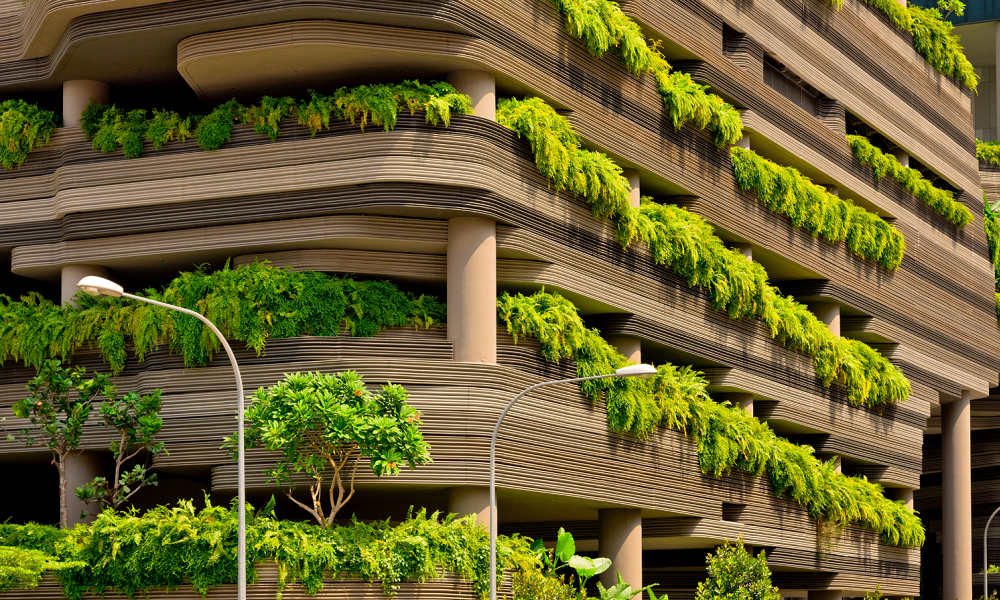Garment District at Risk: Fashion Challenges New York’s Urban Planning – La Voce di New York

Report on Urban Development Challenges in New York’s Garment District and Alignment with Sustainable Development Goals
This report examines the proposed “Midtown South Mixed-Use Plan” and its potential impact on Manhattan’s historic Garment District. The analysis focuses on the conflict between urban redevelopment and the preservation of a unique industrial ecosystem, framed within the context of the United Nations Sustainable Development Goals (SDGs).
Executive Summary of Key Issues
The Garment District, a center for textile production and fashion innovation, is threatened by a rezoning initiative aimed at promoting mixed-use development. This plan poses significant risks to the area’s established economic and cultural identity.
- Displacement of Industry: The proposed urban plan could lead to the displacement of specialized manufacturers, suppliers, and skilled artisans due to rising property values and changing land-use priorities.
- Erosion of an Economic Cluster: The district functions as a concentrated industrial ecosystem where designers, pattern makers, and production facilities co-exist, fostering innovation and efficiency. Rezoning threatens to dismantle this critical infrastructure.
- Cultural Heritage at Risk: The neighborhood represents a significant part of New York City’s industrial and cultural heritage, which is unprotected by the new development proposal.
Analysis in the Context of Sustainable Development Goals (SDGs)
The challenges facing the Garment District are directly related to several key SDGs. The proposed urban plan’s failure to address these goals could undermine New York City’s commitment to sustainable development.
SDG 11: Sustainable Cities and Communities
This goal aims to make cities inclusive, safe, resilient, and sustainable. The situation in the Garment District highlights a tension with the following targets:
- Target 11.4: Protect and safeguard the world’s cultural and natural heritage. The Garment District is a living cultural and industrial heritage site, and its preservation is essential for maintaining the city’s diverse character.
- Target 11.3: Enhance inclusive and sustainable urbanization. A sustainable approach would integrate new development with existing economic functions rather than replacing them, ensuring the community remains inclusive for its traditional workforce.
- Target 11.A: Support positive economic, social, and environmental links between urban, peri-urban, and rural areas. The plan must consider the district’s role in the broader economic fabric of the city and region.
SDG 8: Decent Work and Economic Growth
This goal focuses on promoting sustained, inclusive, and sustainable economic growth, full and productive employment, and decent work for all.
- Threat to Specialized Employment: The district provides thousands of specialized jobs, from high-skilled designers to artisans and factory workers. These jobs are at immediate risk of elimination.
- Impact on Small and Medium-Sized Enterprises (SMEs): The Garment District is composed primarily of SMEs that form the backbone of the local fashion industry. The proposed plan favors large-scale real estate development over the needs of these vital businesses.
- Economic Diversification: True economic resilience comes from diversification. Eradicating a historic manufacturing sector in favor of more office and residential space narrows the city’s economic base.
SDG 9: Industry, Innovation, and Infrastructure
This goal seeks to build resilient infrastructure, promote inclusive and sustainable industrialization, and foster innovation.
- Dismantling Industrial Infrastructure: The Garment District is a critical piece of infrastructure for the American fashion industry. Its dense network of suppliers and manufacturers is an asset that, if lost, cannot be easily replicated.
- Fostering Innovation: The physical proximity of creative and production processes within the district is a catalyst for innovation. Separating these functions would stifle creativity and slow the pace of development in fashion.
- Sustainable Industrialization: Preserving local industrial capacity is a cornerstone of sustainable industrialization, reducing reliance on long and complex global supply chains.
Conclusion and Recommendations for a Sustainable Path Forward
The conflict over the Garment District’s future is a critical test of New York City’s commitment to sustainable urban development. A development model that ignores the principles of the SDGs risks creating a city that is less diverse, less resilient, and less equitable.
- Adopt a Balanced Zoning Approach: Urban planning must create a framework that allows for new development while explicitly protecting existing manufacturing zones and the jobs they support, in line with SDG 8 and SDG 11.
- Recognize and Protect Industrial Heritage: The city should formally recognize the Garment District’s cultural and economic importance and implement policies to safeguard it as a vital industrial asset, fulfilling its obligation under SDG 11.4.
- Promote Sustainable Local Production: Supporting the Garment District aligns with SDG 9 and SDG 12 (Responsible Consumption and Production) by strengthening local supply chains, reducing transportation emissions, and providing a foundation for a more sustainable fashion industry.
Analysis of Sustainable Development Goals (SDGs) in the Article
1. Which SDGs are addressed or connected to the issues highlighted in the article?
Based on the information available in the article’s title, “Garment District at Risk: Fashion Challenges New York’s Urban Planning,” and the meta description, the following SDGs are addressed:
-
SDG 8: Decent Work and Economic Growth
The article highlights a threat to the Garment District, which is described as a hub for “textile production.” This directly relates to the local economy, the viability of businesses within the district, and the jobs of the people employed in this sector. The risk posed by urban planning changes implies a potential loss of jobs and economic activity, which is a core concern of SDG 8.
-
SDG 9: Industry, Innovation, and Infrastructure
The Garment District represents a long-standing industrial infrastructure for New York’s fashion industry. The article’s focus on the threat to “textile production” and the district as a whole points to challenges in sustaining a key local industry. The conflict between urban development and the preservation of this industrial hub is a central theme, connecting directly to SDG 9’s goal of promoting sustainable industrialization.
-
SDG 11: Sustainable Cities and Communities
The central issue discussed is a conflict between an urban development proposal, the “Midtown South Mixed-Use Plan,” and the preservation of a historic and economically significant neighborhood. This falls squarely under SDG 11, which aims to make cities inclusive, safe, resilient, and sustainable. A key component of this goal is the protection of cultural and industrial heritage.
2. What specific targets under those SDGs can be identified based on the article’s content?
The article’s content implies relevance to the following specific targets:
-
Target 8.3: Promote development-oriented policies that support productive activities, decent job creation, entrepreneurship, creativity and innovation…
The threat to the Garment District from the “Midtown South Mixed-Use Plan” suggests that current urban planning policies may not be supporting the productive activities and small-to-medium-sized enterprises that characterize the district. The article implies a need for policies that protect these businesses and the jobs they create.
-
Target 9.2: Promote inclusive and sustainable industrialization…
The article discusses the risk to a key industrial sector (“textile production”) within New York City. The potential decline or displacement of the Garment District’s manufacturing activities runs counter to the goal of promoting and sustaining local industry. Preserving the district would align with this target by maintaining the city’s industrial base in the fashion sector.
-
Target 11.4: Strengthen efforts to protect and safeguard the world’s cultural and natural heritage.
The article describes the Garment District as a “symbolic neighborhood.” This status gives it cultural and historical significance beyond its economic function. The “risk” it faces from urban planning is a direct threat to this heritage, making Target 11.4 highly relevant. The challenge is to balance urban development with the safeguarding of this unique district.
3. Are there any indicators mentioned or implied in the article that can be used to measure progress towards the identified targets?
While the article does not provide explicit data or metrics, it implies several indicators that could be used to measure progress:
-
Implied Indicator for Target 8.3:
The number of businesses and jobs in the Garment District’s textile and fashion sector. A decline in these numbers would indicate a failure to support productive activities, while stabilization or growth would signify progress.
-
Implied Indicator for Target 9.2:
The proportion of manufacturing activity (e.g., value-added or employment) from the textile sector relative to the city’s overall economy. The article implies this is at risk of shrinking. An indicator would be the retention of manufacturing square footage or the number of manufacturing firms within the district.
-
Implied Indicator for Target 11.4:
The status of zoning regulations and preservation policies. The implementation or rejection of the “Midtown South Mixed-Use Plan” serves as a direct indicator. Progress would be measured by the enactment of policies that formally protect the district’s character and function as a cultural and industrial heritage site.
4. Table of SDGs, Targets, and Indicators
| SDGs | Targets | Indicators (Implied from the article) |
|---|---|---|
| SDG 8: Decent Work and Economic Growth | Target 8.3: Promote development-oriented policies that support productive activities, decent job creation, entrepreneurship, creativity and innovation. | The number of active businesses and jobs within the Garment District’s fashion and textile industry. |
| SDG 9: Industry, Innovation, and Infrastructure | Target 9.2: Promote inclusive and sustainable industrialization. | The share of textile manufacturing in the local economy; retention of industrial space dedicated to “textile production.” |
| SDG 11: Sustainable Cities and Communities | Target 11.4: Strengthen efforts to protect and safeguard the world’s cultural and natural heritage. | The existence and enforcement of zoning laws and preservation policies (like the “Midtown South Mixed-Use Plan”) that affect the “symbolic neighborhood.” |
Source: lavocedinewyork.com

What is Your Reaction?
 Like
0
Like
0
 Dislike
0
Dislike
0
 Love
0
Love
0
 Funny
0
Funny
0
 Angry
0
Angry
0
 Sad
0
Sad
0
 Wow
0
Wow
0



























;Resize=805#)



















































